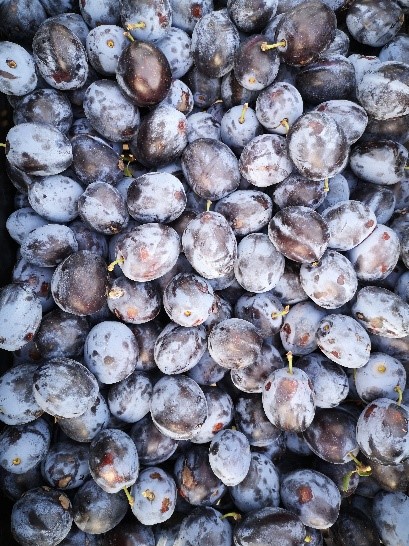
We source locally for the freshest groceries you can trust.
- Description
- Composition
- Similar products
- More from this brand
- Recipes
Today's varieties of plums are often hybrids and come in more than 2,000 varieties, which differ, sometimes only slightly, in size, colour, shape, stone solubility, juice content, aroma and ripening time.
Origin
The plum's original home is Asia Minor. The Romans brought it to Italy in 150 BC, from where it spread throughout Europe.

Main varieties
The plum has a round shape and usually has a distinct suture. They are often not very stone-soluble. Their main colour is blue to violet, but there are also red and yellow varieties. The flesh is mostly yellow. The plum (damson) is oblong with pointed ends, usually with deep dark blue skin and yellow flesh and is easy to stone. Due to its firm, aromatic flesh, it is not only suitable for eating fresh, but also very good for cooking, baking and preserving. The greengage is spherical, the greenish-yellow skin with a reddish shimmer encloses the greenish-white, extremely aromatic and sweet flesh. The mirabelle is small-fruited, spherical, yellow in colour with red cheeks or dots. With its firm yellow and quite sweet flesh, it is very suitable for cooking.
Preparation
Plums are a refreshing delicacy to eat raw. They are also a piquant flavour enhancer for sauces, a tasty addition to fruit salads or for desserts and casseroles.
About the producer
Our family business Bachfeldhof is located in Gänserndorf not far from Vienna.
We cultivate approx. 2.5 hectares of orchard, where we also have our happy laying hens running around. Among other things, we have decided to cultivate plums, apples, pears, peaches, nectarines and cherries.
We are pleased to address sustainably minded consumers with our range.
www.bachfeldhof.at

Storage recommendation
Stone fruit and grapes are best stored in the refrigerator.
